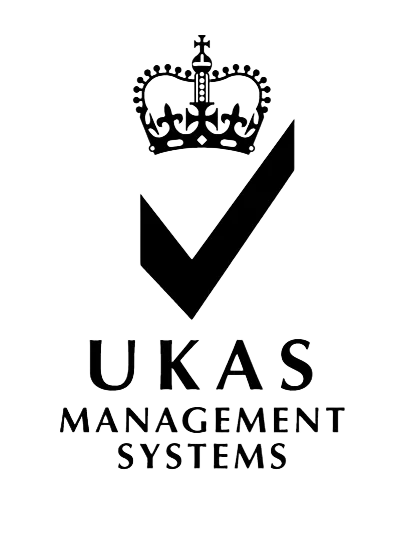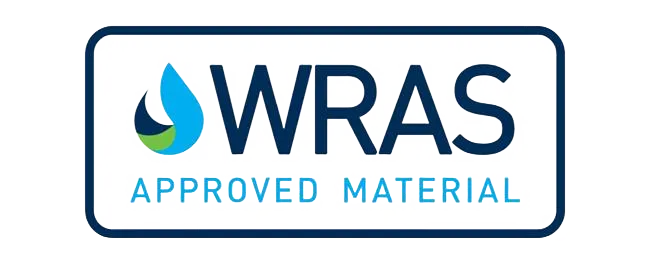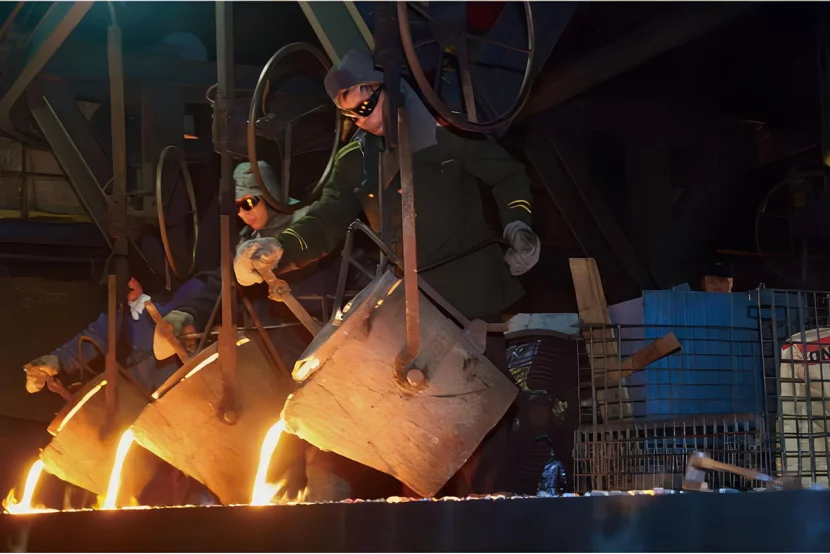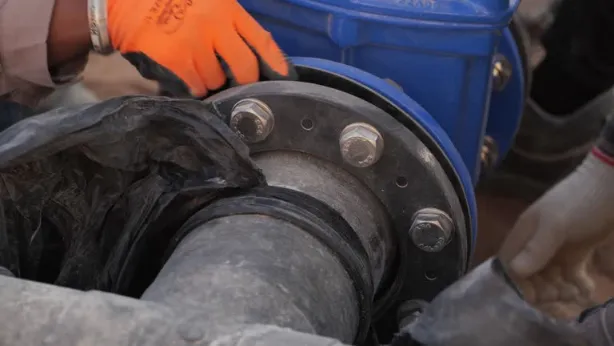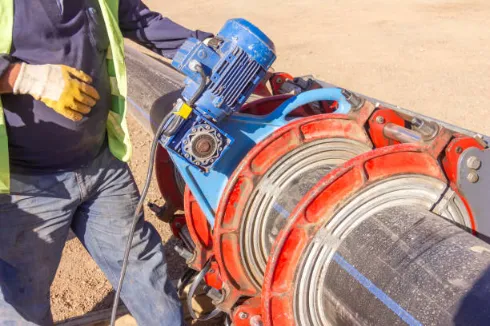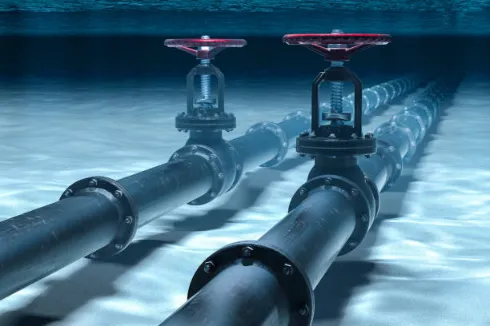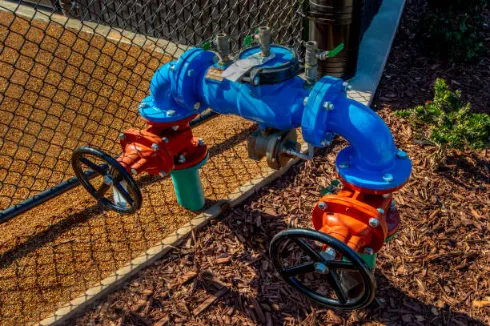Key Properties of Ductile Iron
Mechanical Strength and Durability of Ductile Iron
Ductile iron is crazy tough and sticks around for ages, which makes it perfect for tons of jobs. It’s got these little round graphite bits, called nodular graphite, that make it super strong. Unlike old cast iron, which breaks super easy because of its flaky graphite, ductile iron’s round graphite lets it handle big stress without cracking. This is awesome for things like machine parts that take a lot of weight or shaking.
It’s also really good at dealing with constant stress. Ductile iron can keep going through loads of pressure without quitting. That means parts made from it don’t need fixing or swapping out much, saving heaps of time and money.
Corrosion Resistance in Ductile Cast Iron
Ductile cast iron is a total pro at fighting rust. It holds up awesome in wet or salty places. When it gets wet or hits the air, a special layer forms on it. This layer acts like a superhero shield, keeping rust and damage away.
To make it even stronger, folks can add stuff like galvanization or epoxy lining. These extras protect against harsh things like seawater or tough chemicals. That’s why ductile cast iron is used a bunch in water pipes where rust could cause big problems.
Thermal Conductivity and Heat Resistance
Ductile iron is great at moving heat around. It spreads heat nice and even, which is perfect for parts that need to stay cool or deal with hot stuff. It also stays super solid even when things get really toasty.
This combo of moving heat well and handling high temps makes ductile iron a go-to for things like car engine parts or furnaces. It can take hot-and-cold switches without falling apart, which is a must for jobs with lots of heat.
The Manufacturing Process of Ductile Iron
Overview of Ductile Cast Iron Production
Making ductile cast iron takes some serious care to get the right strength and look. It starts with stuff like pig iron, scrap steel, and ferroalloys. These get melted in a blazing-hot furnace.
Once the metal is all gooey and mixed just right, workers toss in magnesium or cerium. This makes the graphite turn into tiny round balls as it cools, not flakes like in regular cast iron. Those round balls make ductile iron tough and bendy. After cooling, the parts get cleaned up or shaped to fit what they’re used for.
The Role of Nodular Graphite in Ductile Iron Formation
Nodular graphite is the magic trick behind ductile iron’s cool powers. Its round shape stops stress from piling up in one spot, so the material stays tough and doesn’t crack easy. These little balls are spread out nice and even, making the whole piece super strong.
Getting those round graphite balls needs some smart moves. Adding magnesium and controlling how fast the metal cools are key steps. Magnesium tweaks how graphite forms, making it round instead of flaky, which bumps up the strength big time.
Heat Treatment Techniques for Ductile Iron
Heat treatments make ductile iron way better for all sorts of tasks. Here’s the scoop on them:
Annealing: Heat the iron up, then cool it slow. This makes it softer and easier to shape.
Normalizing: Heat it, then let it cool in the air. This tightens the structure for extra strength.
Quenching: Cool it real fast after heating to make it super hard, but it might get a bit brittle.
Tempering: Heat it again after quenching to mix hardness with some toughness.
These tricks let folks tweak ductile iron for stuff like car parts or big machines.
Applications of Ductile Iron in Various Industries
The Use of Ductile Iron Pipe Fittings in Water Supply Systems
Ductile iron pipe fittings are a huge deal for water systems. They’re mega strong and kick rust’s butt, so they’re great for moving water far or under pressure. These fittings can handle tons of force without breaking, keeping water systems safe and smooth.
In cities, they’re used for drinking water pipes because they last forever and follow health rules. Coatings like epoxy lining add extra protection against rust from water or chemicals. Plus, ductile iron is bendy enough to deal with ground shakes from stuff like earthquakes or heavy trucks, making it perfect for big water networks.
Applications of Ductile Cast Iron in Gas and Oil Industries
The gas and oil world needs stuff that can take crazy conditions, like high pressure or rough weather. Ductile cast iron is a rock star here because it’s super tough. Its nodular graphite lets it handle big forces without cracking.
For oil and gas pipelines, ductile cast iron parts keep things running like a dream. These pipelines often go through tough spots, so rust resistance is a must. The material fights off damage from soil or the stuff it carries, cutting down on leaks or breaks. It’s also used in valves, flanges, and other parts in refineries, where its heat resistance is a huge win.
Heating Systems and the Role of Ductile Iron Components
Heating systems need parts that move heat well and stay tough under stress. Ductile iron is awesome at spreading heat evenly, which is great for radiators, boilers, or heat exchangers. It helps save energy in homes, offices, or factories.
It can also handle hot-and-cold cycles without wearing out. This is super key for heating systems that run all the time. Plus, ductile iron is easy to shape into tricky designs, which helps make new, energy-saving heating systems that are better for the planet.
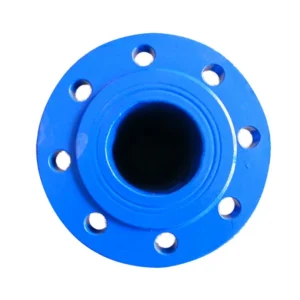
Advantages of Using Ductile Iron Pipe Fittings
Cost-Effectiveness and Longevity of Ductile Iron Pipe Fittings
Ductile iron pipe fittings are a smart pick because they save cash over time. They might cost more up front than stuff like PVC or steel, but they last way longer. Their toughness means you don’t have to fix or replace them much, which keeps costs down.
They also stand up to rough stuff, like acidic dirt or salty water, so they keep working for years. This long life means less hassle for users and cheaper bills for companies. Plus, ductile iron can be recycled into new stuff without losing its quality, which is awesome for the environment.
Performance Under High Pressure in Industrial Pipelines
Industrial pipelines deal with wild pressure, so they need mega tough materials. Ductile iron pipe fittings are perfect because of their super strength. The round graphite bits keep stress from building up, even when pressure goes nuts.
These fittings work with different joint types, like Conflex Joints, to make tight connections. Conflex Joints’ customization service makes sure parts fit just right and handle heat changes or movement. This keeps pipelines running without leaks or breaks.
Frequently Asked Questions
What industries benefit most from using ductile iron pipe fittings?
They’re used a ton in water systems, gas pipelines, oil refining, heating, and chemical plants because they’re tough and fight rust.
How does ductile iron compare to other materials like PVC or steel?
Ductile iron is stronger than PVC and better at stopping rust than steel. It’s also recyclable, which is great for the planet.
Are there any limitations to using ductile cast iron?
It’s super tough, but in really harsh chemical spots, it might need extra coatings to stay safe.
Can ductile iron components handle seismic activity?
Yup! Its bendy nature lets it handle ground shakes from earthquakes without breaking, perfect for shaky areas.
Where can I learn more about Conflex Joints’ industrial solutions?
Conflex Joints has been making pipeline connection products for over 15 years. Their stuff is awesome for water, gas, and more, with killer installation and repair services worldwide.


